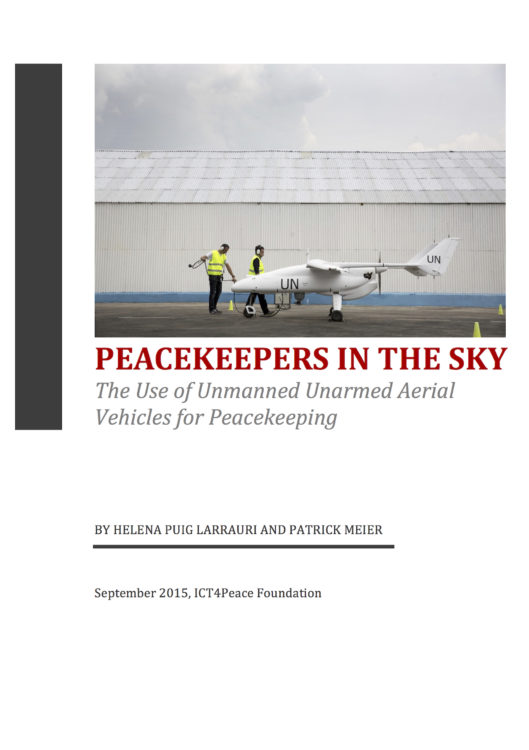
1 September 2015: The ICT4Peace Foundation is pleased to release ‘Peacekeepers in the Sky: The Use of Unmanned Unarmed Aerial Vehicles for Peacekeeping‘, authored by Helena Puig Larrauri and Patrick Meier.
As recently noted by Hervé Ladsous, the Under-Secretary-General for Peacekeeping Operations, the United Nations “cannot continue just using tools of 50 or 100 years ago.” The United Nations Department for Peacekeeping Operations (DPKO) is thus on course to create a “force for the future” by adopting and making increasing use of new technologies like Unarmed Unmanned Aerial Vehicles, also referred to as Unmanned Unarmed Aerial Vehicles (UUAVs). These remotely piloted aircraft systems, which are becoming increasingly cheaper, smarter and more robust, aim to provide peacekeeping missions with greater surveillance capabilities and thus more timely and enhanced situational awareness. This is expected to render peacekeeping missions more effective and cost-efficient in terms of keeping the peace and protecting civilians. According to DPKO’s vision, UUAVs “represent a new way of ‘seeing and knowing’ in peacekeeping and can dramatically improve peacekeepers’ access to information.” One strong proponent of UUAVs claims that they are a “major step forward towards much more discriminating use of violence in war and self-defense – a step forward in humanitarian technology.”
Yet the use of UUAVs is complicated by a number of issues related to perceptions, politics, ethics and empowerment. The use of surveillance technologies by the UN may at times be politically unpopular among those UN Member States that fear technologies like UUAVs will inevitably compromise their territorial and political sovereignty. In fact, arguments against the use of UUAVs sometimes resemble arguments against the “Responsibility to Protect” norm adopted by the UN General Assembly in 2005 as a framework for justifying military intervention as a last resort to protect civilians from mass atrocities. This admittedly narrow set of concerns is not always an issue; they can vary greatly based on the context of a given peacekeeping operation.
Download the full report here.
